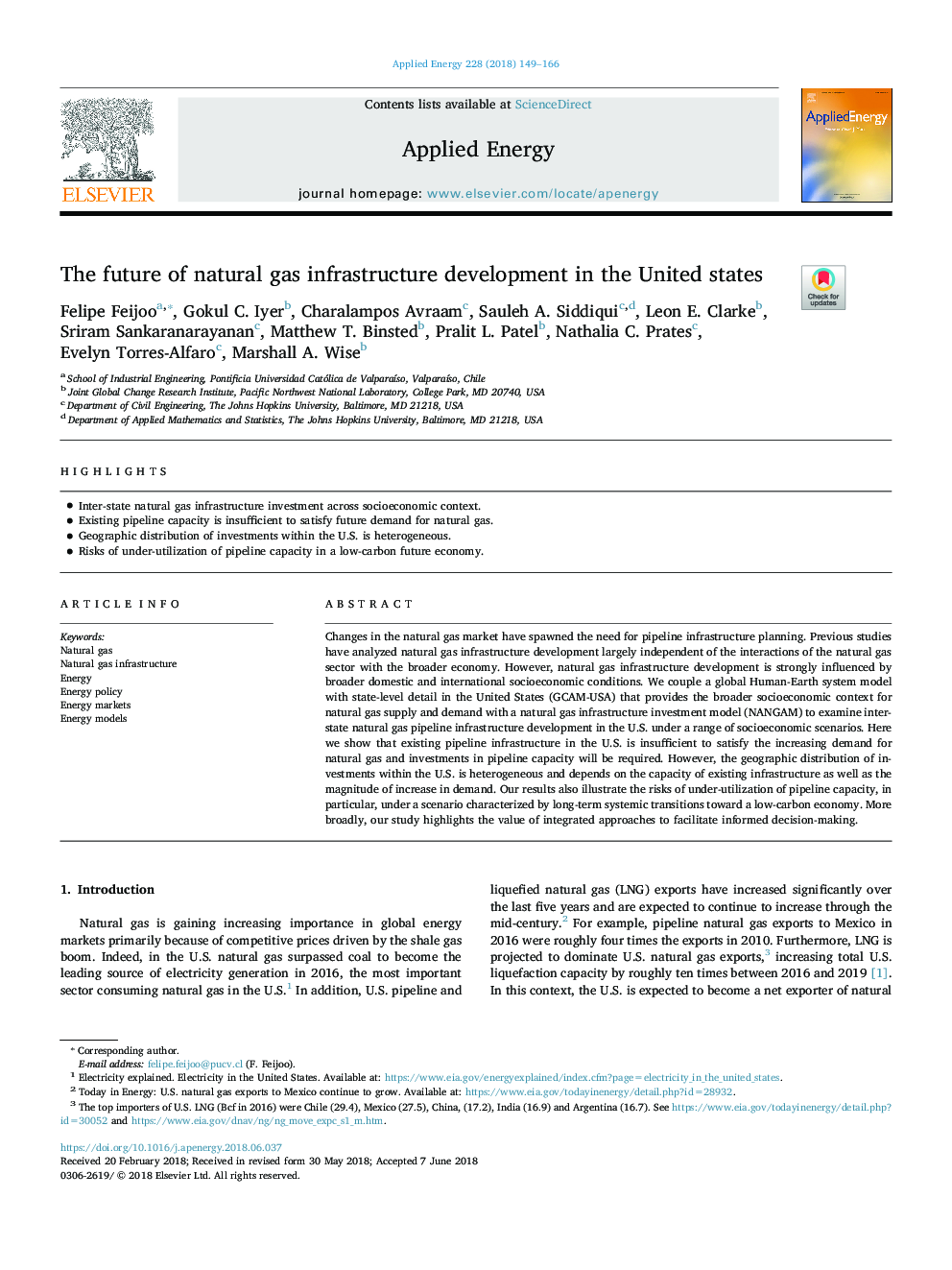| Article ID | Journal | Published Year | Pages | File Type |
|---|---|---|---|---|
| 6679699 | Applied Energy | 2018 | 18 Pages |
Abstract
Changes in the natural gas market have spawned the need for pipeline infrastructure planning. Previous studies have analyzed natural gas infrastructure development largely independent of the interactions of the natural gas sector with the broader economy. However, natural gas infrastructure development is strongly influenced by broader domestic and international socioeconomic conditions. We couple a global Human-Earth system model with state-level detail in the United States (GCAM-USA) that provides the broader socioeconomic context for natural gas supply and demand with a natural gas infrastructure investment model (NANGAM) to examine inter-state natural gas pipeline infrastructure development in the U.S. under a range of socioeconomic scenarios. Here we show that existing pipeline infrastructure in the U.S. is insufficient to satisfy the increasing demand for natural gas and investments in pipeline capacity will be required. However, the geographic distribution of investments within the U.S. is heterogeneous and depends on the capacity of existing infrastructure as well as the magnitude of increase in demand. Our results also illustrate the risks of under-utilization of pipeline capacity, in particular, under a scenario characterized by long-term systemic transitions toward a low-carbon economy. More broadly, our study highlights the value of integrated approaches to facilitate informed decision-making.
Related Topics
Physical Sciences and Engineering
Energy
Energy Engineering and Power Technology
Authors
Felipe Feijoo, Gokul C. Iyer, Charalampos Avraam, Sauleh A. Siddiqui, Leon E. Clarke, Sriram Sankaranarayanan, Matthew T. Binsted, Pralit L. Patel, Nathalia C. Prates, Evelyn Torres-Alfaro, Marshall A. Wise,
